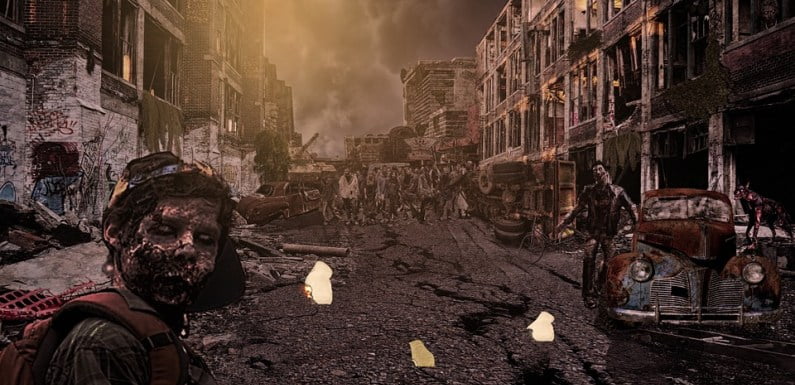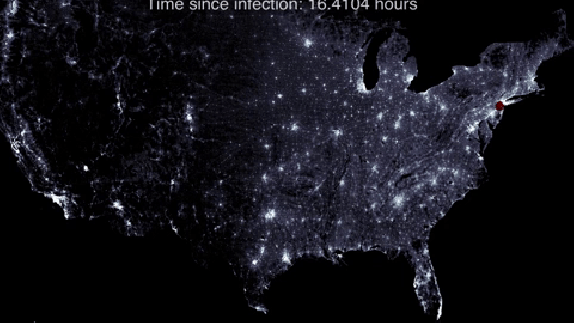
Researchers have illustrated how a zombie apocalypse would look like if it ever happens to occur in the US. They also pointed out where will we be safe.
If a zombie apocalypse ever knocks on our door, people who live in big overpopulated cities will be in trouble, according to a research promulgated in the American Physical Society March meeting.
The scientists used kinds of patterns that are the same with the ones they use to understand real diseases.
They said that big cities are practically the worst place to hide, while more isolated areas like the mountains would be relatively safe.
Alex Alemi, a graduate student at Cornell University, who was part of the research team, says that big cities like New York are, basically means you are doomed. If you go away from people it gives a better chance of not getting infected.
“I’d love to see a fictional account where most of New York City falls in a day, but upstate New York has a month or so to prepare,” Alemi said in the APS press release.
Alemi and his crew employed conventional disease models to evaluate the zombie contamination rate around the US. They presumed humans would contaminate by a zombie bite.
Moreover, following standard protocol, zombies would move only by walking and wouldn’t die naturally but rather would need to be destroyed likely with a shot to the head.
The group used a realistic model, very much comparable to the method epidemiologists use to measure the expanse of other viruses. However, instead of standard, they applied fictional parameters unique to zombies.
They did make some premises, including a transportation failure. Admit it, it’s quite hard to believe airports will stay in a working order for a long time in such case.
The Rocky Mountains, according to the researchers, would be the safest place for this make-believe scenario. Namely, because they have the rare population and are challenging to approach.
City centers with high population are the worst place to stay when the zombie apocalypse starts. However, after about 28 days, they become more harmless, as the areas that surround them become more critical.
The scientists got their inspiration for conducting this statistical research by a book from Max Brooks, “World War Z”. So, interested in how does it work?
Alemi and his crew designed the population centers of a country and then seized several potential interplays. Of course, they added elements of volatility also.
A zombie might bite and infect a human or the individual could escape or kill it. Of course, the no longer alive creature could break the deck by re-living based on some supernatural power.
Furthermore, a zombie apocalypse, in fact, most likely wouldn’t start all over the country, thus this emerges a volatile. The undead might be relatively aggressive or relatively mobile.
The research crew created an interdependent model that allows you to simulate an outbreak by selecting an offset point, a zombie-bite to zombie-kill proportion, and zombie speed of moving.
As you can see in the GIF below, a fast-zombie apocalypse in New York City would be catastrophic within 24 hours.

“Given the time, we could attempt to add more complicated social dynamics to the simulation, such as allowing people to make a run for it, include plane flights, or have an awareness of the zombie outbreak, etc.,” Alemi said in the press release.
Zombie plots might sound like something that only happens in movies. However, public health researchers like to spend time on these type of scenarios. The CDC even has a “Zombie Preparedness” page.









